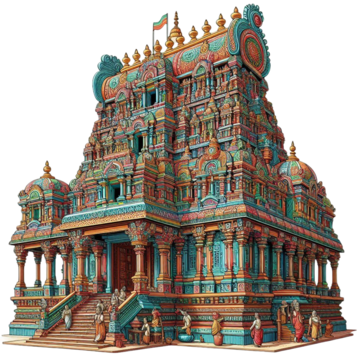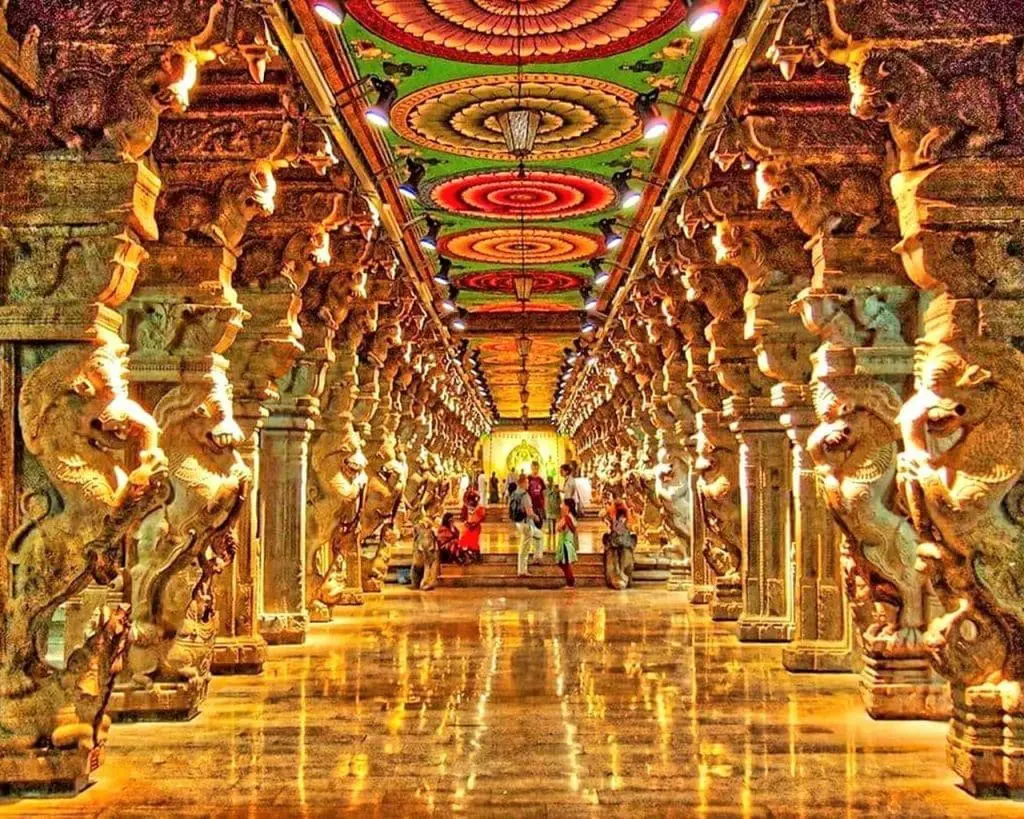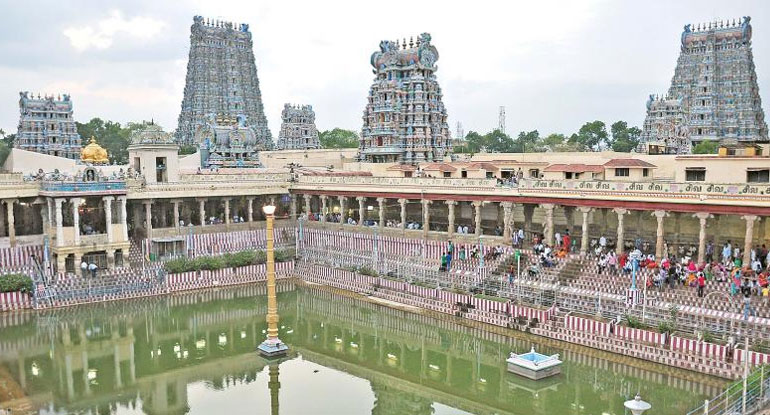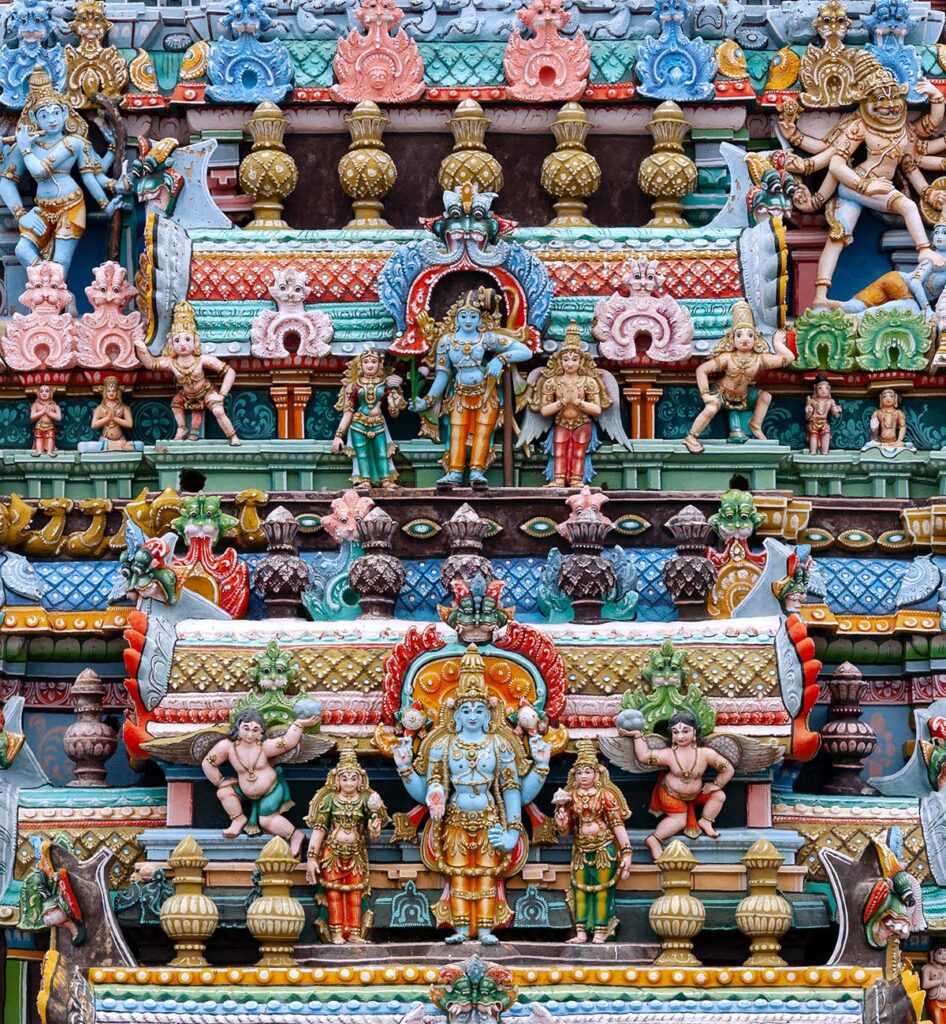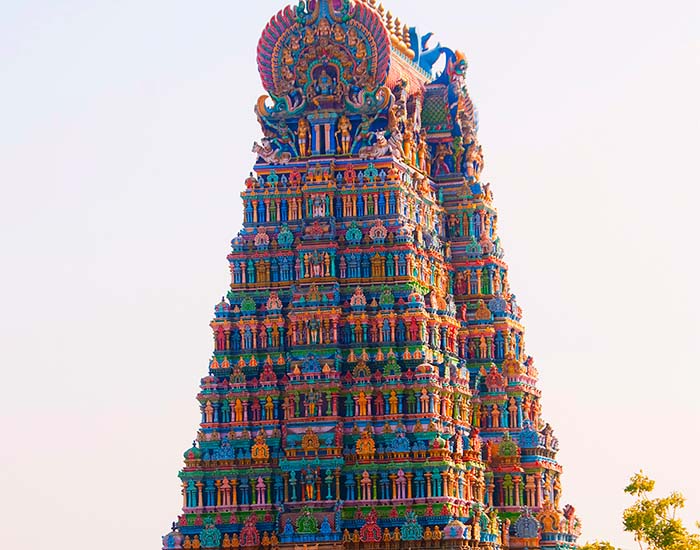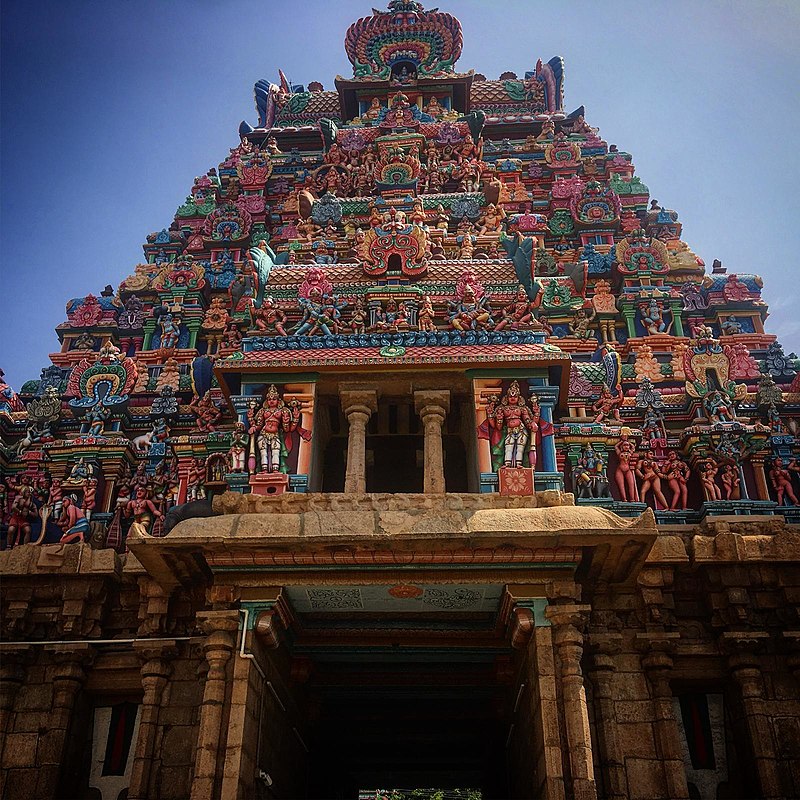
Explore the history, architectural beauty, spiritual significance, and tips for visiting the Meenakshi Temple in Madurai. A must-visit destination for devotees and travelers alike.
Introduction:
Table of Contents
The Meenakshi Temple, located in the heart of Madurai, Tamil Nadu, is one of the most significant and revered temples in India. Dedicated to Goddess Meenakshi, an incarnation of Parvati, and her consort Lord Sundareswarar, an incarnation of Shiva, this temple is not only a spiritual destination but also a marvel of architecture and history. The temple, which dates back over 2,500 years, stands as a testament to the rich cultural heritage of India. It draws millions of devotees and tourists each year, making it one of the most visited pilgrimage sites in the country.
In this blog, we’ll take you on a spiritual journey through the Meenakshi Temple, exploring its history, significance, architecture, rituals, and practical tips for your visit.
The History and Mythology Behind the Meenakshi Temple
The origins of the Meenakshi Temple are steeped in legend. According to mythology, the temple is dedicated to Goddess Meenakshi, the daughter of King Malayadwaja Pandya, who was born with three breasts. A prophecy stated that she would one day lose one breast when she met her true consort. Eventually, the prophecy came true when she met Lord Sundareswarar (Shiva), and their divine union became the foundation of this sacred temple.
The temple’s history goes back thousands of years, but it was during the Pandya Dynasty that it truly flourished. The temple complex, as it stands today, was mostly built in the 16th century under the reign of Tirumalai Nayak, who is credited with completing the massive structure and making significant architectural additions.
Architectural Marvel of the Meenakshi Temple
One of the most striking features of the Meenakshi Temple is its grand architecture. The temple covers an area of over 14 acres and features a series of stunning gopurams (gateway towers) and intricate carvings that depict stories from Hindu mythology.
- The Gopurams: The temple has four main gopurams, each towering over 150 feet high. These gopurams are adorned with beautifully painted sculptures of gods, goddesses, and mythological figures, making them visually captivating. The southern gopuram is the tallest and most impressive of them all, featuring over 1,000 sculptures.
- The Hall of a Thousand Pillars: This iconic hall is one of the temple’s architectural highlights. It is filled with intricately carved pillars, each showcasing scenes from the Ramayana and Mahabharata. The hall’s acoustics are so perfect that a coin dropped at one end of the hall can be heard at the other end, adding to the architectural brilliance.
- Meenakshi and Sundareswarar Sanctums: The sanctums of Goddess Meenakshi and Lord Sundareswarar are the central attractions of the temple. The idol of Meenakshi is exquisitely decorated, with her majestic form beautifully carved in gold. Her consort, Lord Sundareswarar, is equally magnificent, and the two sanctums are the spiritual heart of the temple.
- Pond of the Golden Lotus: The temple also houses a sacred pond, known as the Pond of the Golden Lotus. It is believed that taking a dip in this pond will purify the soul. The pond is surrounded by beautiful structures, adding to the temple’s serene and divine ambiance.
Spiritual Significance of the Meenakshi Temple
The Meenakshi Temple holds immense spiritual significance for devotees. It is believed that a visit to the temple and offering prayers to Goddess Meenakshi and Lord Sundareswarar brings blessings, prosperity, and fulfillment of desires. Here are a few reasons why the temple is spiritually significant:
- Divine Marriage: The Meenakshi-Sundareswarar marriage is celebrated as a divine union. Every year, the temple hosts the grand Meenakshi Thirukalyanam, a festival that commemorates this divine wedding. Devotees believe that praying here can help them find happiness and harmony in their own marriages.
- The Sacred Fairs: The temple hosts several important festivals, with the Chithirai Festival being the most popular. This festival, celebrated in the Tamil month of Chithirai (April-May), attracts millions of devotees who gather to witness the procession of Goddess Meenakshi and Lord Sundareswarar.
- The Five Daily Rituals: The temple follows five daily rituals known as Panchakalas. These include the morning Kalarathri pooja, the midday Uchikala pooja, the evening Sayaraksha pooja, and the nightly Palliyarai pooja. Devotees can experience these rituals while visiting the temple.
Visiting the Meenakshi Temple: What to Expect
The Meenakshi Temple is open to devotees from early morning until late evening. Visiting this iconic temple is an enriching experience, both spiritually and culturally. Here’s what to expect when you visit:
- Rituals and Darshan: Visitors can partake in the temple rituals, including offering prayers to Lord Sundareswarar and Goddess Meenakshi. The temple’s priests are available to assist with the rituals, and devotees can purchase offerings like flowers, fruits, and incense.
- Queue System for Darshan: Due to the temple’s popularity, there is a well-organized queue system for darshan. You can opt for the free darshan or pay for a quicker, special darshan. The temple also has provisions for VIP darshan.
- The Temples Within the Temple: The Meenakshi Temple complex also includes smaller shrines dedicated to other deities like Lord Ganesha, Lord Murugan, and Lord Vishnu. Take time to explore these lesser-known shrines and experience the divine energy in every corner of the temple.
- Shopping and Souvenirs: There are several shops around the temple that sell traditional South Indian handicrafts, jewelry, and religious items. These make for perfect souvenirs to remember your visit.
Best Time to Visit Meenakshi Temple
The best time to visit the Meenakshi Temple is during the winter months, from October to March, when the weather is more comfortable. However, if you want to witness the grandeur of the Chithirai Festival, which usually takes place in April, it’s an extraordinary time to experience the temple in full festive glory.
How to Reach the Meenakshi Temple
By Air: The nearest airport to Madurai is the Madurai International Airport, located about 10 km from the temple. Flights from major cities like Chennai, Bangalore, and Mumbai connect to Madurai.
By Train: Madurai is well connected by train to other major cities like Chennai, Bangalore, and Coimbatore. The Madurai Junction railway station is about 3 km from the temple.
By Road: Madurai is accessible by road with regular buses from nearby cities. The temple is centrally located in Madurai, making it easy to reach by taxi or auto-rickshaw.
Conclusion:
The Meenakshi Temple in Madurai is not just a temple; it is a living, breathing testament to the grandeur of South Indian architecture, culture, and spirituality. A visit here is a chance to connect with the divine, explore a piece of history, and immerse yourself in the traditions of Tamil Nadu. Whether you are a devotee seeking blessings or a traveler fascinated by history and architecture, the Meenakshi Temple is a must-visit destination that will leave you in awe.
FAQ Section:
Q1: What is the dress code for visiting the Meenakshi Temple? Visitors are expected to dress modestly. Men should wear dhotis or pants, and women should wear traditional attire like sarees or salwar kameez.
Q2: Are there accommodations near the temple? Yes, there are several hotels and guesthouses near the temple, ranging from budget to luxury options.
Q3: Can I perform rituals on behalf of someone else? Yes, you can perform rituals on behalf of someone else. The temple priests will guide you through the process.
Q4: What is the significance of the Chithirai Festival? The Chithirai Festival celebrates the divine marriage of Meenakshi and Sundareswarar. It’s one of the biggest festivals in Madurai, drawing millions of pilgrims from around the world.
A visit to the Meenakshi Temple offers a profound experience filled with rich history, divine energy, and cultural wonders. Make sure to include this temple in your spiritual journey through India!
